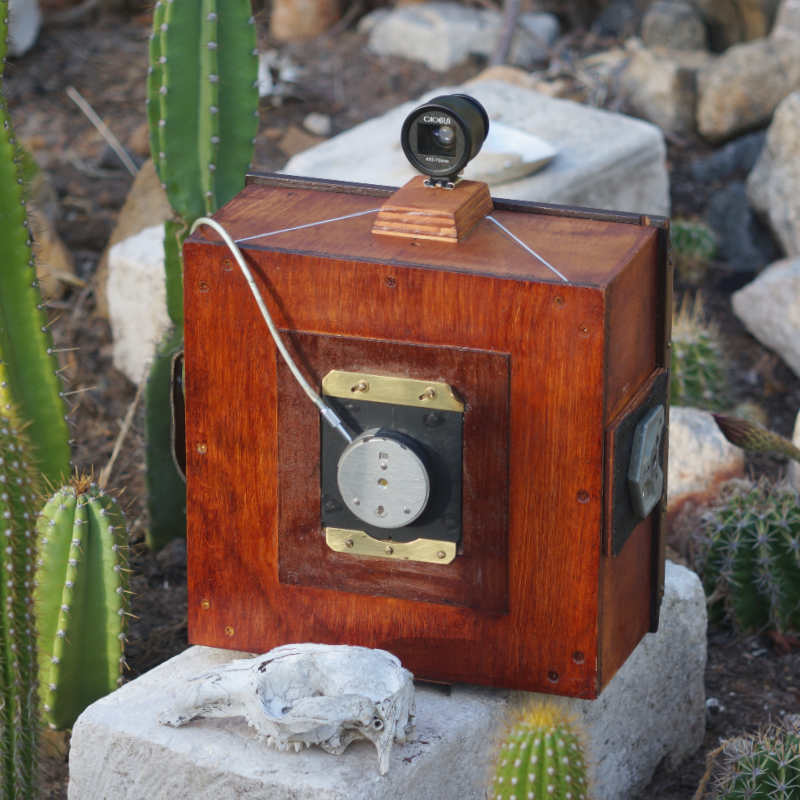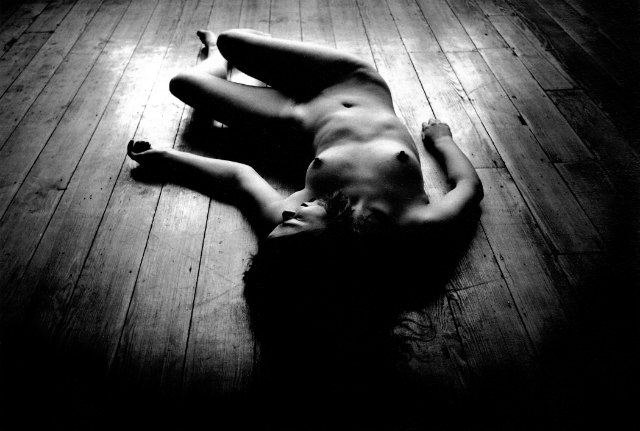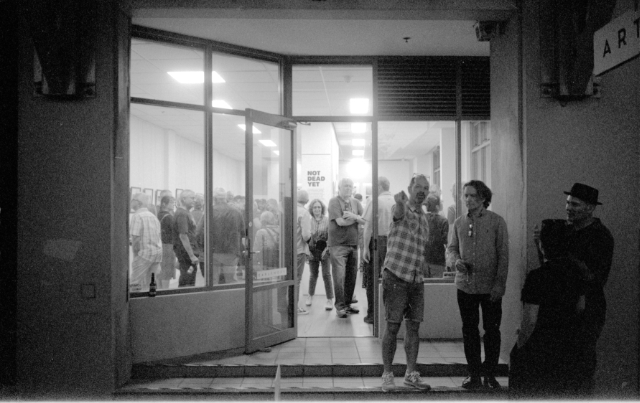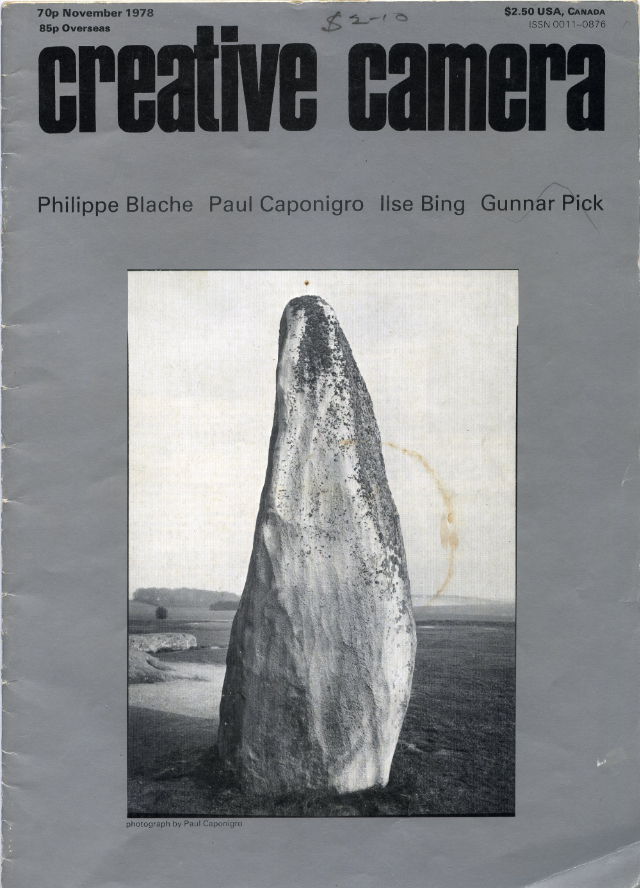WPPD2024
May 8th, 2024
WPPD2024 and QUINNI ARTS:
Quinni Arts celebrated Worldwide Pinhole Photography Day 2024 with twelve of us making pinhole pictures using can-meras with photographic paper negs or 5x4” precision pinhole cameras with film. This year we did it as a community event, usually just Rae and I take part and have done since 2008.
Pinhole photographs are made with cameras using a tiny hole in very thin metal instead of a lens. This means you can make a photograph that requires only a light-tight container, tea caddy, coffee tin, etc with a tiny hole in one side as a camera and any photo-sensitive surface inside it.
The image is formed by beams of light from the subject travelling through the hole to the photosensitive material in a straight line. (OK, light, like everything in the Universe, is bent, but over a six inch travel we can ignore that.)
Elmari Steyn, Ghost Me on Swing
You can make the camera yourself or adapt an existing camera. The experience of image-making becomes more personal when created with your own hand-made camera.
A pinhole camera will give infinite depth-of-field, skewed perspectives, and slower exposures. My beloved pinhole photographer has become more creative and more sensitive to what she chooses to photograph since swapping one of my Leica lenses for her pinhole camera.
PINHOLE PIX:
Pinhole images are not sharp anywhere, but within this have an infinite depth of field. As they take longer to record than a picture made with a lens they show movement through time, so leaves, bodies, water, clouds and anything else that moves shows subject movement. These blurs give a soft ethereal effect to a pinhole photograph, which makes pinhole work attractive to people using alternative printing processes.
Elmari Steyn, Quinninup Playground Horse
WPPD:
Worldwide Pinhole Photography Day is an annual event on the last Sunday in April each year. The first WPPD celebration occurred in 2001. It is an event designed to draw people together to make pinhole photographs. Encouragement is given to communities to work together, as we did in Quinninup this year.
WPPD has an on-line gallery where each participant is allowed to up-load one pinhole picture per year made on WPPD at any time during the subsequent month.
Our group will be loading images over the next few days, following my processing and scanning of the film and paper negatives and email selection by the participants.
There is only one prescriptive rule apart from no lens, which is no nude or naked images. The simple reason is that as WPPD welcomes all ages, cultures, ethnicities and religions, there are those who would be offended by nakedness.
(Aside from WPPD, the particular perspectives and subject movement of pinhole images gives portraits of naked people a very special quality, for example the work of (looking for catalogue) in Australia and, as a parallel, the small aperture lens work of Bill Brandt.)
Kade Fontanini, Me Sitting on the Slide and Dad on Both Sides, like Magic
CAN-MERAS:
Coffee can-meras are made from coffee tins. These are painted black internally and have a 10mm hole drilled in one side into which a pinhole is taped.
The care and precision with which the hole is drilled is crucial. My home made pinholes in yogurt lid aluminium are the worst on the planet, and continue to be the worst no matter how much care I apply to making them, which is almost none.
Our can-mera pinholes gave an aperture of f142. (Optimal apertures, called f stops, for a pinhole camera are about f256. Aperture, ‘f’ equals Focal length divided by diameter of hole.) My pinholes had catastrophic light scattering due to the roughness of the hole.
Thanks to Bronwyn for the can-mera cans.
WOODEN CAMERAS:
Two wooden cameras were used, Rae’s Zero 5x4” camera with an aperture of f216 and my Super Wide Woody with the lens removed and a 0.35mm pinhole taped to the front, giving an aperture of f180. I should have used a 0.25mm pinhole giving an aperture of f252, but that was given to a friend who has never used it.
The event was fun, but long and tiring for me and continued after the event with me in darkroom followed by scanning, inverting, flipping and adjusting the toenail values of the paper negatives. I managed to make one pinhole pic’ as part of the demonstration, but I did not have to time to document the event. Thanks to Lisa for her iPhone documentation.
Steve Wicks, Quinninup School Room and Tank
LATER:
The twelve images from Quinninup are now on the WPPD 2024 Gallery: Groups: Quinni Arts.
Most people selected the strange and distorted pix from the coffee can-meras rather than the more normal looking ones from the two 5x4” film cameras - The attitude seemed to be if something is weird, make it really weird.
FUTURE:
We will be happy to help a small group who wish to explore pinhole photography more deeply during the next year leading to future WPPD events.
THE HOLE PICTURE BOOK:
“The Hole Picture” book draft version has gone with the participants. From viewing the feedback received, the enlarged first edition is now being prepared, including a section from Justin Quinnell of Bristol on making precise pinholes.
I only make one pinhole image per year, just one, on Worldwide Pinhole Photography Day.
← Return to Blog





 RSS Feed
RSS Feed